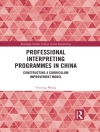This book provides a forum for theoretical, methodological and empirical contributions to research on language(s), multimodality and public space, which will advance new ways of understanding the sociocultural, ideological and historical role of communication practices and experienced lives in a globalised world. Linguistic Landscape is viewed as a metaphor and expanded to include a wide variety of discursive modalities: imagery, non-verbal communication, silence, tactile and aural communication, graffiti, smell, etc. The chapters in this book cover a range of geographical locations, and capture the history, motives, uses, causes, ideologies, communication practices and conflicts of diverse forms of languages as they may be observed in public spaces of the physical environment. The book is anchored in a variety of theories, methodologies and frameworks, from economics, politics and sociology to linguistics and applied linguistics, literacy and education, cultural geography and human rights.
Tabela de Conteúdo
Foreword
Notes on Contributors
Martin Pütz and Neele Mundt: Multilingualism, Multimodality and Methodology: Linguistic Landscape Research in the Context of Assemblages, Ideologies and (In)visibility – An Introduction
Part 1: General Issues, Methodology and LL as a Pedagogical Resource
Chapter 1. Elana Shohamy: Linguistic Landscape after a Decade: An Overview of Themes, Debates and Future Directions
Chapter 2. Durk Gorter: Methods and Techniques for Linguistic Landscape Research: About Definitions, Core Issues and Technological Innovations
Chapter 3. David Malinowski: Learning To Translate Linguistic Landscape
Part 2: Broadening the Field of Semiotic Landscapes: Semiotic Assemblages, Multimodality and Contemporary Urban Spaces
Chapter 4. Alastair Pennycook: Linguistic Landscapes and Semiotic Assemblages
Chapter 5. Adam Jaworski: The Art of Silence in Upmarket Spaces of Commerce
Chapter 6. Christine Domke: Multimodality in the City: On the Media, Perception and Locatedness of Public Textscapes
Chapter 7. Ying-Hsueh Hu: Multilingual Audio Announcements: Power and Identity
Part 3: Expanding LL Studies: Power Relations, Acts of Resilience and Diachronic Changes
Chapter 8. Karsten Legère and Tove Rosendal: Linguistic Landscapes and the African Perspective
Chapter 9. Sabine Diao-Klaeger and Rosalie Zongo: Slogans as Part of Burkina Faso’s Linguistic Landscape during the Insurrection in 2014
Chapter 10. Isabelle Buchstaller and Seraphim Alvanides: Investigating the Bilingual Landscape of the Marshall Islands
Chapter 11. Irina Moore: Linguistic, Ethnic and Cultural Tensions in the Sociolinguistic Landscape of Vilnius: A Diachronic Analysis
Chapter 12. Evelyn Ziegler, Ulrich Schmitz and Haci-Halil Uslucan: Attitudes towards Visual Multilingualism in the Linguistic Landscape of the Ruhr Area
Sobre o autor
Neele Mundt is Lecturer in English Linguistics at University of Koblenz-Landau, Germany. Her research interests include multilingualism, language attitudes and identity, and language and education in Cameroon.












